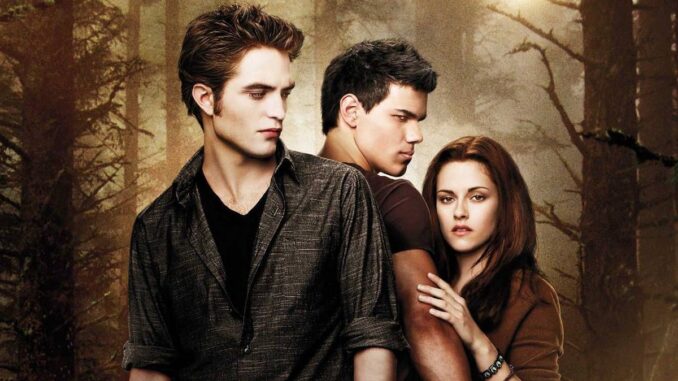
Behind the Velvet Curtain: Untold Stories from the Cast of The Twilight Saga
The world was draped in midnight hues, shimmering with a gothic romanticism that captivated a generation. The Twilight Saga, a phenomenon born from the pages of Stephenie Meyer’s novels, became a cultural touchstone, sparking fervent fandom, fueling countless debates, and etching itself into the pop culture lexicon. But behind the meticulously crafted sets, the brooding stares, and the fantastical special effects, lay a human experience, a collection of untold stories from the cast that shaped their journeys and left an indelible mark on their lives. This essay delves behind the velvet curtain, exploring anecdotes and insights from the actors who breathed life into the characters we came to love (or, perhaps, love to hate), illuminating the challenges, camaraderie, and unexpected moments that defined their time in Forks.
One of the most surprising revelations to emerge from behind the scenes is the intense pressure cooker atmosphere created by the sudden surge in popularity. Kristen Stewart, thrust into the limelight as Bella Swan, often speaks of the claustrophobia and relentless scrutiny that accompanied her newfound fame. While many envied her starring role, few understood the weight of expectations she shouldered. Interviews reveal a young woman struggling to reconcile her introverted nature with the demands of a global phenomenon, a stark contrast to the often idealized image projected on screen. She recalls feeling suffocated by the constant paparazzi presence, a relentless invasion of privacy that forced her to navigate a world she was ill-prepared for. “It was like being in a zoo,” she confessed in one interview, a sentiment echoed by other members of the cast. This pressure, though a shared experience, manifested differently for each actor, shaping their choices and contributing to the overall dynamic of the ensemble.
Beyond the pressure cooker, however, lay a surprisingly strong sense of camaraderie. Taylor Lautner, who portrayed the fiercely loyal Jacob Black, often speaks of the tight bond he formed with the other young actors. He recalls late-night pizza runs, impromptu jam sessions, and shared anxieties about navigating the whirlwind of premieres and media obligations. These shared experiences forged genuine friendships, creating a support system that helped them weather the storm. He emphasizes the importance of humor as a coping mechanism, recounting countless pranks and inside jokes that kept their spirits high, even during the most grueling shoots. This sense of community, often unseen by the public, provided a crucial anchor in the turbulent sea of fame.
Furthermore, the actors’ individual interpretations and personal connections to their characters often led to unexpected on-set moments and subtle nuances that enriched the narrative. Peter Facinelli, who played the patriarch Carlisle Cullen, revealed in several interviews that he drew inspiration from his own experiences as a father to infuse his portrayal with a sense of warmth and paternal wisdom. He consciously avoided portraying Carlisle as simply a stoic figure, opting instead to imbue him with a quiet empathy and unwavering devotion to his adopted family. These subtle choices, born from his own life experiences, added layers of complexity to his character, resonating with audiences who saw in Carlisle a figure of stability and unwavering love.
The filming locations themselves also contributed to the unique atmosphere of the saga. The damp, evergreen forests of Oregon and British Columbia became characters in their own right, imbuing the films with a sense of gothic mystery and romantic isolation. Nikki Reed, who played Rosalie Hale, often spoke of the profound impact the natural beauty had on her and the cast. She recalls long walks in the woods during breaks from filming, allowing the environment to seep into her performance and inform her understanding of her character’s longing for a human life. The physical environment, far from being just a backdrop, became an integral part of the storytelling process, shaping the mood and influencing the actors’ interpretations.
Finally, perhaps one of the most poignant untold stories lies in the actors’ evolving relationship with the fandom itself. While grateful for the unwavering support, many found the intensity overwhelming. Robert Pattinson, who played the iconic Edward Cullen, often expressed his bemusement with the phenomenon, struggling to reconcile the romanticized image of his character with his own cynical sensibilities. He frequently engaged in self-deprecating humor, poking fun at the absurdity of the saga and challenging the idealized perception of his character. This tension between the actor and the fandom, though sometimes fraught with controversy, ultimately contributed to a more nuanced understanding of the complexities of fame and the power of fan culture.
In conclusion, the Twilight Saga was more than just a series of films; it was a cultural phenomenon that impacted the lives of everyone involved. Behind the meticulously crafted visuals and the on-screen drama lie untold stories of pressure, camaraderie, personal connection, and evolving relationships with the fandom. These behind-the-scenes glimpses offer a more human perspective on the saga, revealing the challenges and triumphs of the actors who brought these beloved characters to life. They remind us that even within the realm of fantasy, the human experience remains at the heart of every story. By understanding these untold narratives, we gain a deeper appreciation for the complexities of fame, the power of connection, and the enduring legacy of the Twilight Saga.
